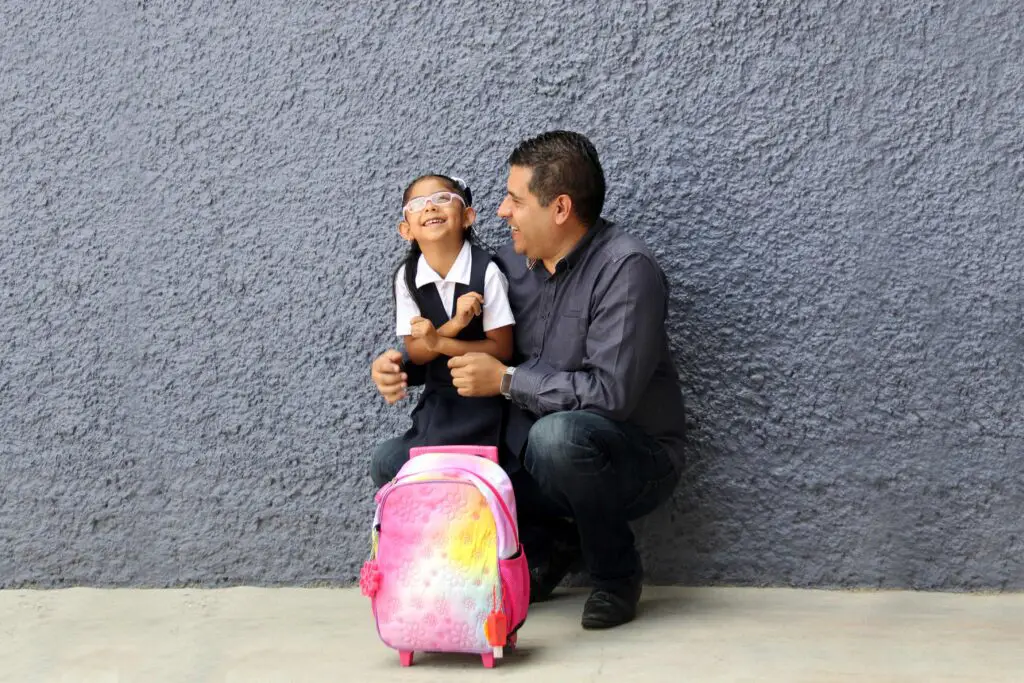
Separation anxiety can be a common challenge for young children starting daycare. Adjusting to time apart from parents or primary caregivers can lead to feelings of fear and worry, which are often difficult for children to manage on their own. For parents, watching their child struggle with this transition can also be challenging, as they want their child to feel safe and happy in a new environment.
However, there are effective ways to help children build confidence, ease anxiety, and adjust to daycare. With the right approach and support, children can feel secure and develop independence as they settle into their routine at daycare.
Understanding Separation Anxiety
Separation anxiety is a normal stage in early childhood development, typically appearing in infants around 8 to 12 months. For many children, it may continue into the preschool years. At its core, separation anxiety is the fear of being separated from familiar people or places. Children experiencing this often cling, cry, or resist being left at daycare or school, as they feel uncomfortable with unfamiliar surroundings.
While separation anxiety may vary in intensity, it usually decreases over time as children learn that caregivers will return. However, some children may need additional support. Understanding what separation anxiety is and knowing it’s a normal reaction can help both parents and caregivers approach it with patience and compassion. If you’re seeking ways to help ease your child’s transition, find some tips here to make the adjustment smoother for both of you.
Preparing Your Child for Daycare
Preparation is key to making the transition to daycare smoother. Before the first day, introduce the idea of daycare gradually. Talk about daycare as a fun place to play, learn, and make friends. Visiting the daycare center together allows children to explore the new environment with the comfort of having a parent close by. They may even meet some of the caregivers or other children, which can help them feel less intimidated.
Another useful approach is practicing short separations at home. For instance, parents might leave the room for a few minutes and then return, reassuring their child that they always come back. Gradual separations build a child’s confidence that they won’t be left alone indefinitely, helping them cope better when it’s time to be dropped off at daycare.
Establishing a Consistent Routine
Routine plays a significant role in helping children feel secure. A structured daily routine allows them to know what to expect, making transitions easier and less stressful. Setting up a routine at home that includes meal times, naps, and playtime can give children a sense of stability that extends to their time at daycare.
Parents can also develop a specific goodbye ritual that becomes familiar and comforting for the child. For example, a quick hug, a special phrase, or a cheerful wave goodbye can give children a sense of predictability and comfort. Once the goodbye is done, it’s best not to linger, as this can make the separation more challenging for the child.
Building Trust in the Caregivers
Children need to feel that they are safe and cared for in the daycare environment. Developing a trusting relationship with daycare caregivers can help children feel secure when their parents are not there. Caregivers can support children by offering warmth and consistency, responding to their needs, and providing a friendly, welcoming presence.
For parents, showing enthusiasm and trust in the caregivers can also make a difference. Children are highly attuned to their parents’ feelings, and when parents speak positively about the caregivers, it helps the child feel that daycare is a safe place.
Acknowledging and Validating Feelings
It’s essential for children to know that it’s okay to feel nervous, scared, or even sad when separated from their parents. Acknowledging and validating these feelings allows children to process their emotions without feeling pressured to hide them. By supporting their emotions in this way, parents and caregivers encourage positive behavior, helping children feel understood and reassured. For example, saying, “It’s okay to miss Mommy and Daddy. You are safe here, and we will see each other soon,” reassures the young child that their feelings are normal while gently encouraging them to engage with their surroundings.
Staying Calm and Positive
Children often mirror the emotions of their parents. Remaining calm and positive during the drop-off can reassure a child and help them feel more comfortable. Parents might feel anxious or sad about leaving their child at daycare, but maintaining a calm demeanor can help ease their child’s nerves. Staying upbeat and offering encouragement, such as, “You’re going to have so much fun playing today!” can positively influence the child’s mood and outlook.
Giving It Time
![]()
![]()
![]()


Overcoming separation anxiety disorder is a gradual process that requires time and patience. Some children adjust quickly, while others need more support to feel secure. Being patient and consistent in applying these techniques can eventually help a child feel comfortable and confident at daycare. Rather than expecting immediate results, focusing on small improvements allows parents and caregivers to celebrate each step in the child’s progress.
Conclusion
Helping a child overcome separation anxiety at daycare is a process that takes time, understanding, and consistent effort. By preparing children for daycare, establishing routines, building trust with caregivers, and encouraging independence, parents can support their child’s journey toward feeling secure and confident in a new environment. With patience and compassion, children can learn to cope with separation, forming positive associations with daycare. In time, the skills and resilience they develop will serve them well in future transitions and experiences.






